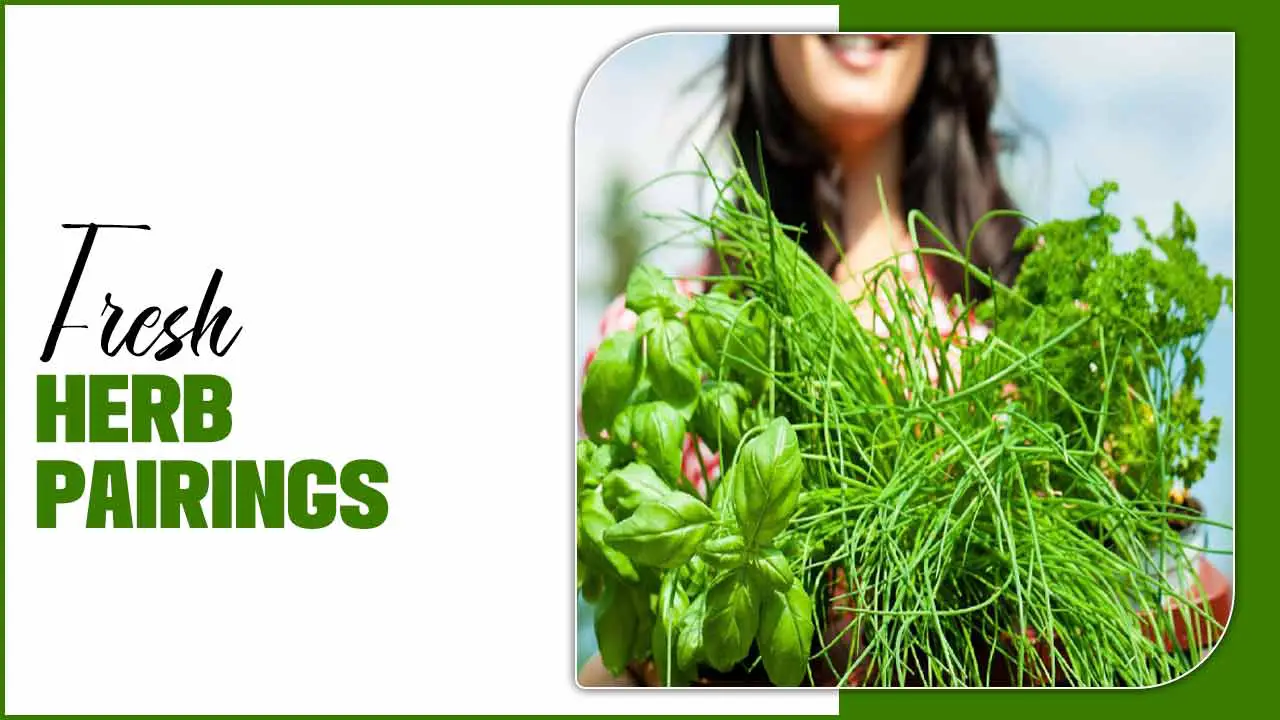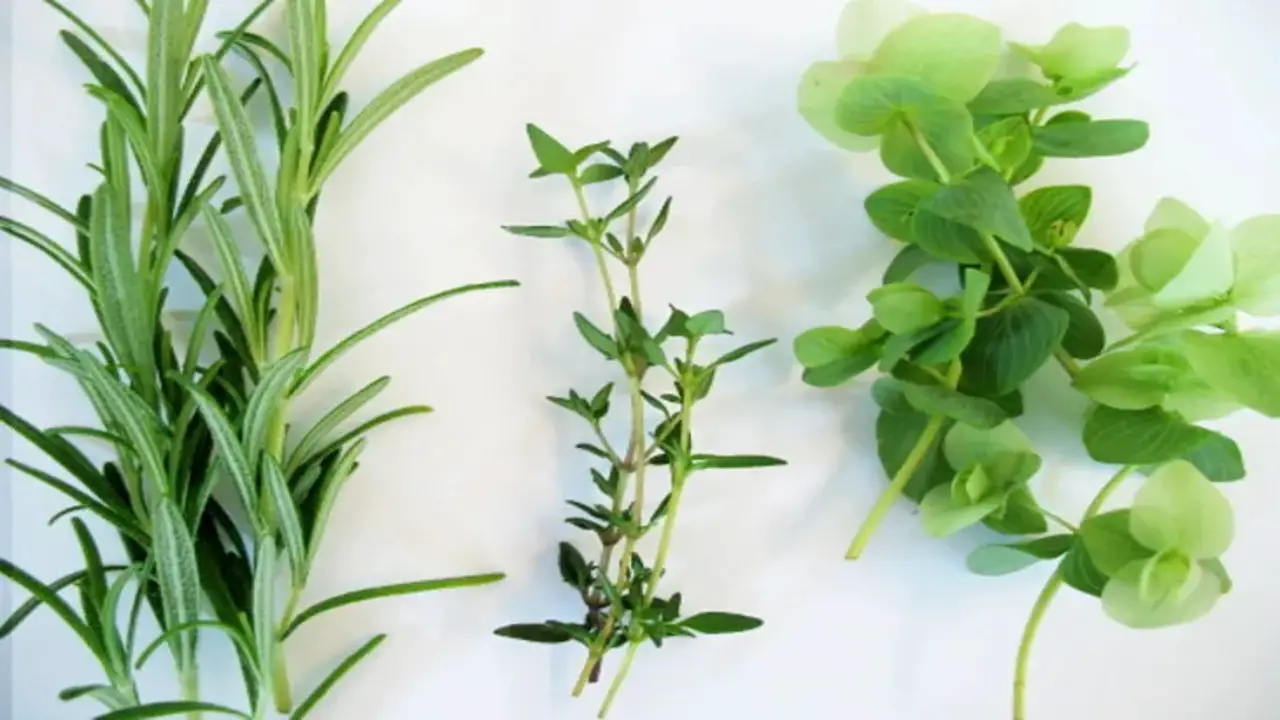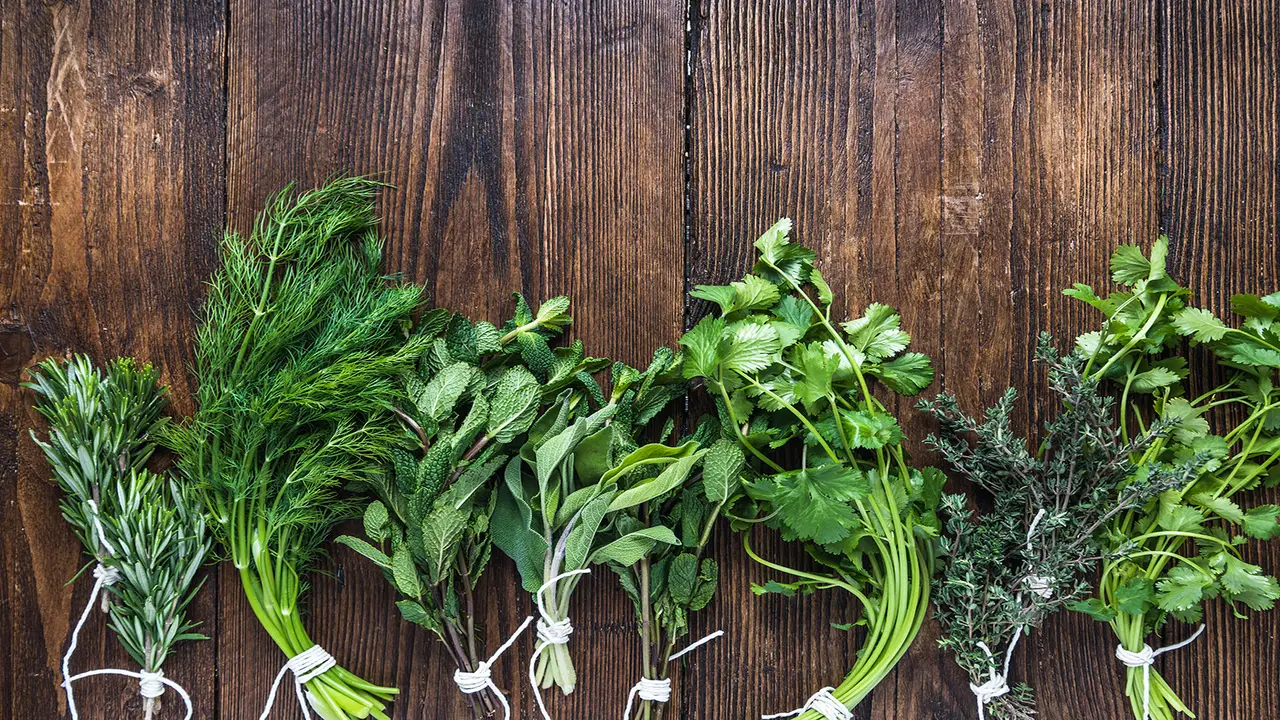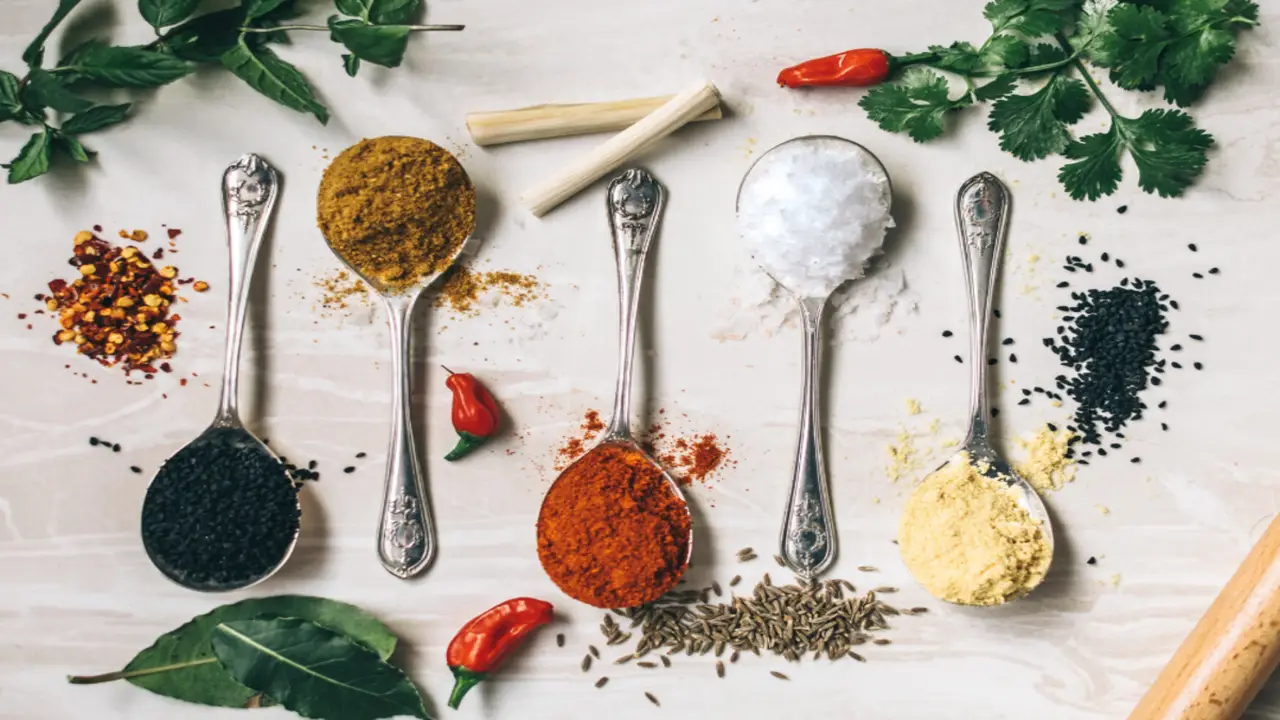Fresh herbs are an essential component of any flavorful dish. Pairing the right herbs with your ingredients can transform a bland meal into a culinary masterpiece.
However, with so many herbs, knowing which ones to use and how to use them can be challenging. That’s why we’ve created this ultimate guide to fresh herb pairings. We’ll explore the various herbs and how they complement different ingredients.
Whether you’re a seasoned chef or a novice cook, this guide will provide all the information you need to create delicious and well-rounded dishes. We’ll cover everything from classic pairings like rosemary and lamb to unique combinations like cilantro and seafood.
We’ll also delve into the different techniques for using fresh herbs, including chopping, crushing, and infusing them into oils and vinegar. We believe understanding how to use fresh herbs is essential to elevate your cooking game, and we hope this guide will inspire you to experiment with it.

Fresh Herb Pairings In Elevating Your Cooking Game

Fresh herbs are a great way to add flavor and depth to any dish. However, pairing the right herb with the right dish can be tricky. That’s why having a comprehensive guide to fresh herb pairings is essential for any home cook or chef. Regarding herb pairings, there are a few key things to remember. First, consider the flavor profile of the dish you’re making. For example, a delicate herb like dill or parsley would be a great pairing if you’re cooking a light fish dish.
However, if you’re making a hearty beef stew, you might opt for stronger herbs like rosemary or thyme. Another important factor to consider is the texture of the herb. Some herbs, like cilantro and basil, are best used as a garnish or added at the end of cooking, while others, like bay leaves and sage, are more suited for long cooking times and can be added at the beginning of the cooking process.
Understanding Flavor Profiles Of Herbs

Understanding the flavor profiles of herbs is an essential aspect of cooking. It involves identifying the unique taste and aroma of different herbs and spices and how they complement each other in a dish. Herbs like basil, oregano, and thyme are commonly used in Italian cuisine, while rosemary and sage are popular in Mediterranean dishes.
Each herb has a distinct flavor profile created by its chemical composition. For example, basil has a sweet, slightly peppery taste because of its high concentration of eugenol. On the other hand, Oregano has a pungent, slightly bitter taste because of its carvacrol and thymol content. Understanding these flavor profiles allows you to use herbs effectively in your cooking, enhancing the taste and aroma of your dishes. It is also important to note that the amount of herbs used can impact the flavor profile of a dish.
Pairing Herbs With Vegetables

Pairing herbs with vegetables is a great way to elevate your cooking and bring out the flavors in both the herbs and the vegetables. When pairing herbs with vegetables, there are a few things to consider. Firstly, it’s important to consider the flavors and aromas of herbs and vegetables. For example, basil pairs well with tomatoes because they both have a sweet and slightly acidic flavor.
Similarly, thyme complements root vegetables like carrots and potatoes because they taste slightly earthy and woody. Another thing to consider is the cooking method. Some herbs hold up better to cooking than others. For example, rosemary and sage can withstand high heat and are great for roasting vegetables, while delicate herbs like parsley and chives are best used as a finishing touch on top of cooked vegetables.
Pairing Herbs With Proteins

Pairing herbs with proteins is a great way to elevate the flavors of any dish. Herbs not only add complexity and depth to a meal, but they also have health benefits. For instance, rosemary is a great herb to pair with proteins such as lamb or pork. It not only adds a delicious earthy flavor, but it also has anti-inflammatory properties. Another herb that pairs well with proteins is thyme.
Thyme has a slightly sweet and lemony flavor that helps cut through the richness of meats such as chicken or beef. Additionally, thyme has antioxidant properties that can help boost the immune system. Basil is another herb that can enhance the flavor of meats like fish or chicken. Its sweet and slightly peppery flavor adds a refreshing taste to any meal. Moreover, basil has anti-inflammatory and antibacterial properties, making it a great addition to any diet.
Pairing Herbs With Dairy
Pairing herbs with dairy can elevate the flavors of any dish. Various herbs work well with dairy products, including basil, dill, chives, thyme, and rosemary. Basil, for example, pairs well with mozzarella cheese and can be used to make a delicious Caprese salad. Dill is commonly used in dips and sauces made with sour cream or cream cheese, while chives add a subtle onion flavor to dishes with cream or cheese.
Thyme is a great addition to recipes that incorporate milk or cream, giving them a rich and earthy flavor. Rosemary is a popular herb for seasoning butter, which can enhance the flavors of bread, potatoes, and meats. Experimenting with different herb and dairy combinations can lead to some delightful surprises in the kitchen. For example, a creamy herb sauce made with tarragon and heavy cream can be the perfect topping for a grilled steak.
Pairing Herbs With Grains And Legumes
Pairing herbs with dairy can elevate the flavors of any dish. Various herbs work well with dairy products, including basil, dill, chives, thyme, and rosemary. Basil, for example, pairs well with mozzarella cheese and can be used to make a delicious Caprese salad. Dill is commonly used in dips and sauces made with sour cream or cream cheese, while chives add a subtle onion flavor to dishes with cream or cheese. Thyme is a great addition to recipes that incorporate milk or cream, giving them a rich and earthy flavor.
Rosemary is a popular herb for seasoning butter, which can enhance the flavors of bread, potatoes, and meats. Experimenting with different herb and dairy combinations can lead to some delightful surprises in the kitchen. For example, a creamy herb sauce made with tarragon and heavy cream can be the perfect topping for a grilled steak. The key is to balance the flavors of the herbs.
Creating Herb-Infused Oils And Vinegar

Pairing herbs with grains and legumes can elevate the flavor profile of any dish. Herbs such as basil, oregano, and thyme can add freshness to hearty lentil stews or quinoa salads. Dried herbs like rosemary and sage can infuse a warm, earthy aroma to baked goods made with whole wheat flour or buckwheat. When pairing herbs with grains and legumes, it’s important to consider the unique flavors of each ingredient.
For example, cilantro and cumin can complement the nutty taste of brown rice, while a sprinkle of parsley can brighten up the mild flavor of chickpeas. Herbs can also help balance the texture of grains and legumes. Chopped chives or dill can add a crispy crunch to fluffy couscous, while a pinch of thyme can soften the chewy texture of black beans. The possibilities are endless for pairing herbs with grains and leg.
Using Herbs In Cocktails And Mocktails
Fresh herbs are a great way to elevate the flavors of any dish or beverage. In terms of cocktails and mocktails, using herbs can bring a whole new level of complexity and depth to the drink. Some popular herb pairings for cocktails include thyme and gin, rosemary and vodka, and basil and tequila.
These herbs can be muddled or infused into the drink to release natural oils and flavors. Thyme can add a subtle earthiness to a gin and tonic, while rosemary can give a vodka martini a refreshing twist. Basil is a classic pairing with tequila in margaritas and can also be used in a refreshing mojito.
But it’s not just about the taste – herbs also appeal visually to cocktails and mocktails. A sprig of rosemary or a few basil leaves can make a simple drink look more elegant and sophisticated.
Conclusion
Fresh Herb Pairings are not only a flavorful addition to any dish, but they also offer a range of health benefits. By pairing the right herbs with your meals, you can enhance your food’s flavors and nutrient content. Whether cooking up a storm in the kitchen or adding a touch of freshness to your salads, there are endless possibilities with fresh herbs. So next time you reach for the salt and pepper, consider adding some fresh herbs to elevate your meal to the next level.
FAQ
1.What Are Some Common Fresh Herb Pairings For Grilled Meats?
Ans: Some common fresh herb pairings for grilled meats include:
- Rosemary and thyme for lamb
- Sage and parsley for chicken
- Basil and oregano for beef
- Cilantro and lime for seafood
- Dill and lemon for fish
2.Which Fresh Herbs Pair Well With Roasted Vegetables?
Ans: Some fresh herbs that pair well with roasted vegetables are thyme, rosemary, sage, parsley, and cilantro.
3.Can You Suggest Some Fresh Herb Pairings For Seafood Dishes?
Ans: Yes, here are some fresh herb pairings that go well with seafood dishes:
- Dill: This herb pairs well with salmon, shrimp, and lobster.
- Parsley: This versatile herb goes well with most seafood dishes.
4.How Do Different Types Of Fresh Herbs Affect The Flavor Of Pasta Dishes?
Ans: Different types of fresh herbs can greatly affect the flavor of pasta dishes. For example, basil adds a sweet and slightly peppery flavor, while oregano brings a bold and pungent taste. Thyme adds a subtle earthiness, and parsley provides a bright and fresh taste.
5.What Are Some Unique Fresh Herb Pairings For Cocktails Or Mocktails?
Ans: Here are some unique fresh herb pairings for cocktails or mocktails:
- Basil and strawberry
- Thyme and lemon
- Rosemary and grapefruit
- Sage and blackberry

I’m a writer and blogger who loves to talk about entertainment, culture, and relationships. I love to share my thoughts and insights on these topics, and I’m always looking for new ways to engage with my readers. I’m also a big fan of learning new things, so I’m always exploring new areas of interest.
